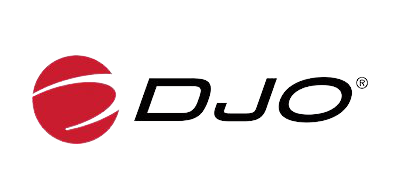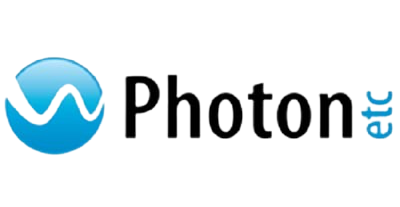Energy Harvesting is a procedure where unused and naturally formed energy is utilized to produce energy using various advanced technologies.
For industry structure analysis, the Energy Harvesting industry is relatively low concentrated. These manufacturers range from large multinational corporations to small privately owned companies compete in this industry. The top five players account for about 46% of the revenue market.
The Energy Harvesting System Market is estimated to be worth USD 469 million in 2021 and is projected to reach USD 740 million by 2028, at a compound annual growth rate (CAGR) of 10.8 % from 2021-2028.
This report focuses on the global Energy Harvesting Systems status, future forecast, growth opportunity, key market and key players. The study objectives are to present the Energy Harvesting Systems development in United States, Europe and China.
The study objectives of this report are:
In this study, the years considered to estimate the market size of Energy Harvesting Systems are as follows:
History Year: 2017-2020
Base Year: 2020
Estimated Year: 2020
Forecast Year 2021 to 2028
For the data information by region, company, type and application, 2020 is considered as the base year. Whenever data information was unavailable for the base year, the prior year has been considered.
Table of Contents
1 Report Overview
1.1 Study Scope
1.2 Key Market Segments
1.3 Players Covered
1.4 Market Analysis by Type
1.4.1 Global Energy Harvesting Systems Market Size Growth Rate by Type (2017-2028)
1.4.2 Photovoltaic
1.4.3 Thermoelectric
1.4.4 Piezo
1.4.5 Electrodynamic
1.5 Market by Application
1.5.1 Global Energy Harvesting Systems Market Share by Application (2017-2028)
1.5.2 Industrial
1.5.3 Consumer Electronics
1.5.4 Building & Home
1.5.5 WSN
1.5.6 Security
1.5.7 Others
1.6 Study Objectives
1.7 Years Considered
2 Global Growth Trends
2.1 Energy Harvesting Systems Market Size
2.2 Energy Harvesting Systems Growth Trends by Regions
2.2.1 Energy Harvesting Systems Market Size by Regions (2017-2028)
2.2.2 Energy Harvesting Systems Market Share by Regions (2017-2020)
2.3 Industry Trends
2.3.1 Market Top Trends
2.3.2 Market Drivers
2.3.3 Market Opportunities
3 Market Share by Key Players
3.1 Energy Harvesting Systems Market Size by Manufacturers
3.1.1 Global Energy Harvesting Systems Revenue by Manufacturers (2017-2020)
3.1.2 Global Energy Harvesting Systems Revenue Market Share by Manufacturers (2017-2020)
3.1.3 Global Energy Harvesting Systems Market Concentration Ratio (CR5 and HHI)
3.2 Energy Harvesting Systems Key Players Head office and Area Served
3.3 Key Players Energy Harvesting Systems Product/Solution/Service
3.4 Date of Enter into Energy Harvesting Systems Market
3.5 Mergers & Acquisitions, Expansion Plans
4 Breakdown Data by Type and Application
4.1 Global Energy Harvesting Systems Market Size by Type (2017-2020)
4.2 Global Energy Harvesting Systems Market Size by Application (2017-2020)
5 United States
5.1 United States Energy Harvesting Systems Market Size (2017-2020)
5.2 Energy Harvesting Systems Key Players in United States
5.3 United States Energy Harvesting Systems Market Size by Type
5.4 United States Energy Harvesting Systems Market Size by Application
6 Europe
6.1 Europe Energy Harvesting Systems Market Size (2017-2020)
6.2 Energy Harvesting Systems Key Players in Europe
6.3 Europe Energy Harvesting Systems Market Size by Type
6.4 Europe Energy Harvesting Systems Market Size by Application
7 China
7.1 China Energy Harvesting Systems Market Size (2017-2020)
7.2 Energy Harvesting Systems Key Players in China
7.3 China Energy Harvesting Systems Market Size by Type
7.4 China Energy Harvesting Systems Market Size by Application
8 Japan
8.1 Japan Energy Harvesting Systems Market Size (2017-2020)
8.2 Energy Harvesting Systems Key Players in Japan
8.3 Japan Energy Harvesting Systems Market Size by Type
8.4 Japan Energy Harvesting Systems Market Size by Application
9 Southeast Asia
9.1 Southeast Asia Energy Harvesting Systems Market Size (2017-2020)
9.2 Energy Harvesting Systems Key Players in Southeast Asia
9.3 Southeast Asia Energy Harvesting Systems Market Size by Type
9.4 Southeast Asia Energy Harvesting Systems Market Size by Application
10 India
10.1 India Energy Harvesting Systems Market Size (2017-2020)
10.2 Energy Harvesting Systems Key Players in India
10.3 India Energy Harvesting Systems Market Size by Type
10.4 India Energy Harvesting Systems Market Size by Application
11 Central & South America
11.1 Central & South America Energy Harvesting Systems Market Size (2017-2020)
11.2 Energy Harvesting Systems Key Players in Central & South America
11.3 Central & South America Energy Harvesting Systems Market Size by Type
11.4 Central & South America Energy Harvesting Systems Market Size by Application
12 International Players Profiles
12.1 Texas Instruments
12.1.1 Texas Instruments Company Details
12.1.2 Company Description and Business Overview
12.1.3 Energy Harvesting Systems Introduction
12.1.4 Texas Instruments Revenue in Energy Harvesting Systems Business (2017-2020)
12.1.5 Texas Instruments Recent Development
12.2 Maxim Integrated
12.2.1 Maxim Integrated Company Details
12.2.2 Company Description and Business Overview
12.2.3 Energy Harvesting Systems Introduction
12.2.4 Maxim Integrated Revenue in Energy Harvesting Systems Business (2017-2020)
12.2.5 Maxim Integrated Recent Development
12.3 Cypress Semiconductor
12.3.1 Cypress Semiconductor Company Details
12.3.2 Company Description and Business Overview
12.3.3 Energy Harvesting Systems Introduction
12.3.4 Cypress Semiconductor Revenue in Energy Harvesting Systems Business (2017-2020)
12.3.5 Cypress Semiconductor Recent Development
12.4 Wurth Electronics
12.4.1 Wurth Electronics Company Details
12.4.2 Company Description and Business Overview
12.4.3 Energy Harvesting Systems Introduction
12.4.4 Wurth Electronics Revenue in Energy Harvesting Systems Business (2017-2020)
12.4.5 Wurth Electronics Recent Development
12.5 Analog Devices
12.5.1 Analog Devices Company Details
12.5.2 Company Description and Business Overview
12.5.3 Energy Harvesting Systems Introduction
12.5.4 Analog Devices Revenue in Energy Harvesting Systems Business (2017-2020)
12.5.5 Analog Devices Recent Development
12.6 Microchip Technology
12.6.1 Microchip Technology Company Details
12.6.2 Company Description and Business Overview
12.6.3 Energy Harvesting Systems Introduction
12.6.4 Microchip Technology Revenue in Energy Harvesting Systems Business (2017-2020)
12.6.5 Microchip Technology Recent Development
12.7 STMicroelectronics
12.7.1 STMicroelectronics Company Details
12.7.2 Company Description and Business Overview
12.7.3 Energy Harvesting Systems Introduction
12.7.4 STMicroelectronics Revenue in Energy Harvesting Systems Business (2017-2020)
12.7.5 STMicroelectronics Recent Development
12.8 Fujitsu
12.8.1 Fujitsu Company Details
12.8.2 Company Description and Business Overview
12.8.3 Energy Harvesting Systems Introduction
12.8.4 Fujitsu Revenue in Energy Harvesting Systems Business (2017-2020)
12.8.5 Fujitsu Recent Development
12.9 Enocean
12.9.1 Enocean Company Details
12.9.2 Company Description and Business Overview
12.9.3 Energy Harvesting Systems Introduction
12.9.4 Enocean Revenue in Energy Harvesting Systems Business (2017-2020)
12.9.5 Enocean Recent Development
12.10 Silicon Labs
12.10.1 Silicon Labs Company Details
12.10.2 Company Description and Business Overview
12.10.3 Energy Harvesting Systems Introduction
12.10.4 Silicon Labs Revenue in Energy Harvesting Systems Business (2017-2020)
12.10.5 Silicon Labs Recent Development
12.11 Laird Thermal Systems
12.12 Cymbet
12.13 Mide Technology
12.14 Alta Devices
12.15 Powercast
12.16 MicroGen Systems
12.17 Micropelt
13 Market Forecast 2021-2028
13.1 Market Size Forecast by Regions
13.2 United States
13.3 Europe
13.4 China
13.5 Japan
13.6 Southeast Asia
13.7 India
13.8 Central & South America
13.9 Market Size Forecast by Product (2021-2028)
13.10 Market Size Forecast by Application (2021-2028)
14 Analyst's Viewpoints/Conclusions
15 Appendix
15.1 Research Methodology
15.1.1 Methodology/Research Approach
15.1.1.1 Research Programs/Design
15.1.1.2 Market Size Estimation
12.1.1.3 Market Breakdown and Data Triangulation
15.1.2 Data Source
15.1.2.1 Secondary Sources
15.1.2.2 Primary Sources
15.2 Disclaimer
15.3 Author Details
To ensure high-level data integrity, accurate analysis, and impeccable forecasts
For complete satisfaction
On-demand customization of scope of the report to exactly meet your needs
Targeted market view to provide pertinent information and save time of readers
A faster and efficient way to cater to the needs with continuous iteration


Focus on Data Accuracy & Reliability

75+ Clients in Fortune 500

All your transactions are secured end-to-end, ensuring a satisfactory purchase

Ensure the best and affordable pricing







